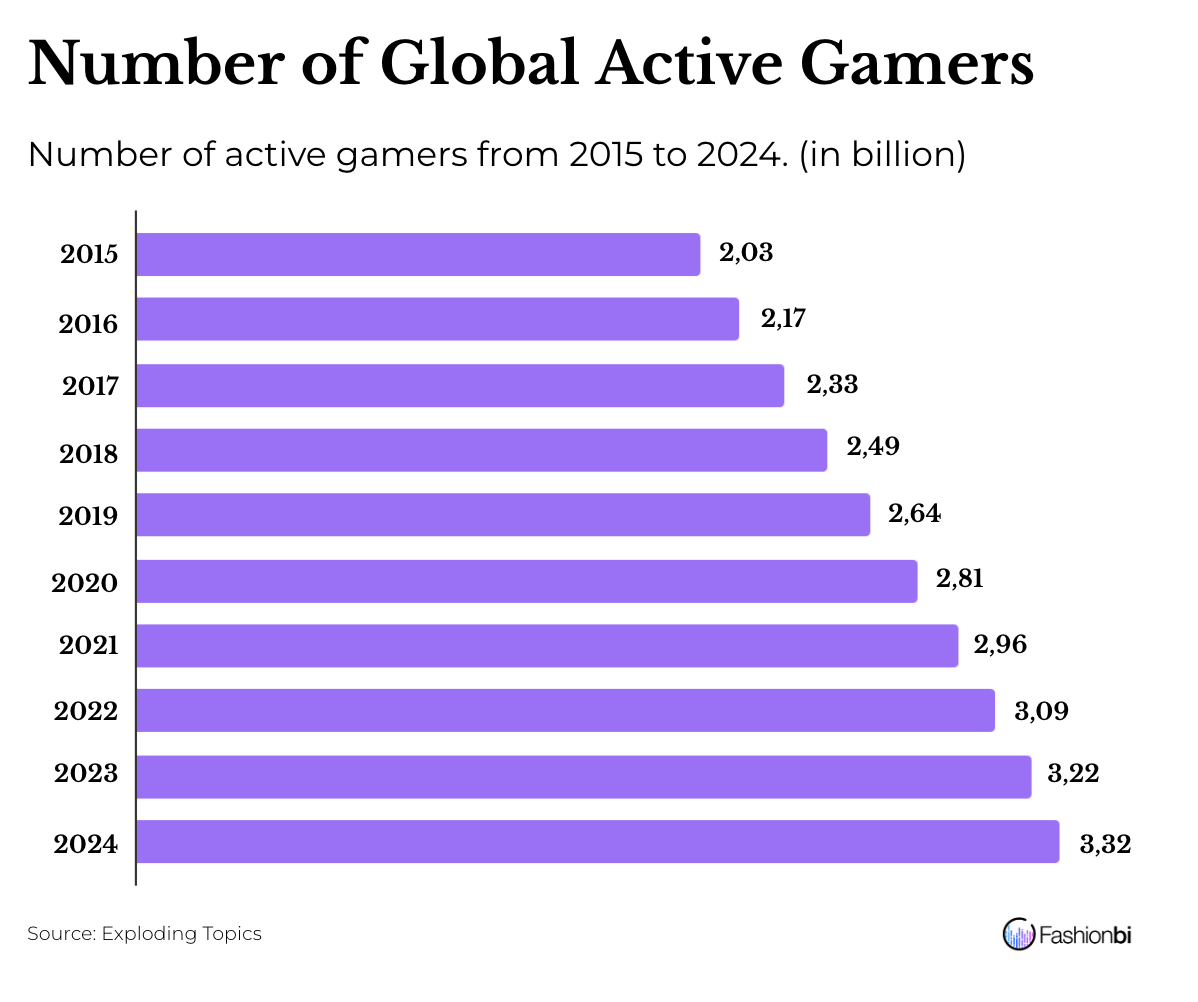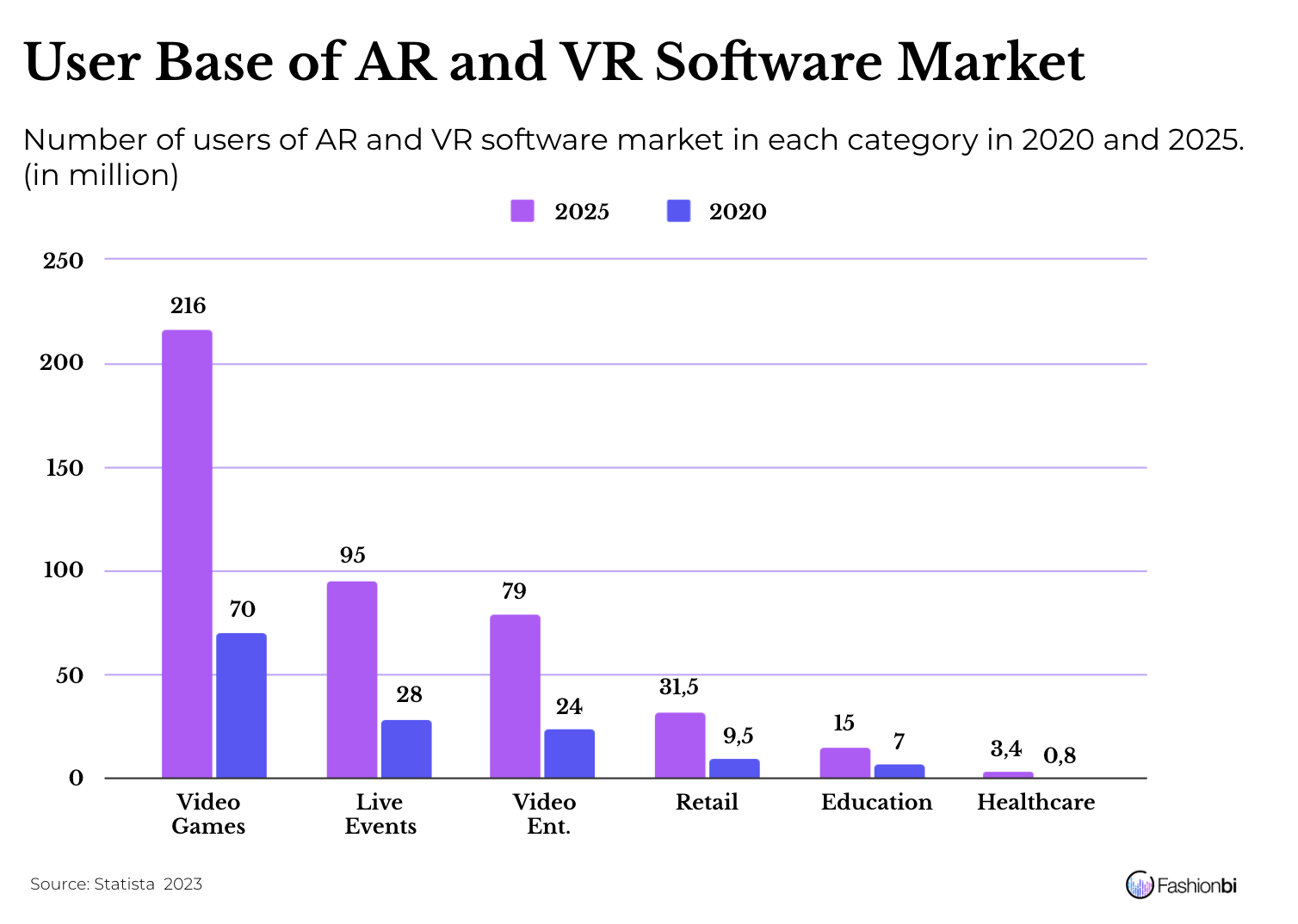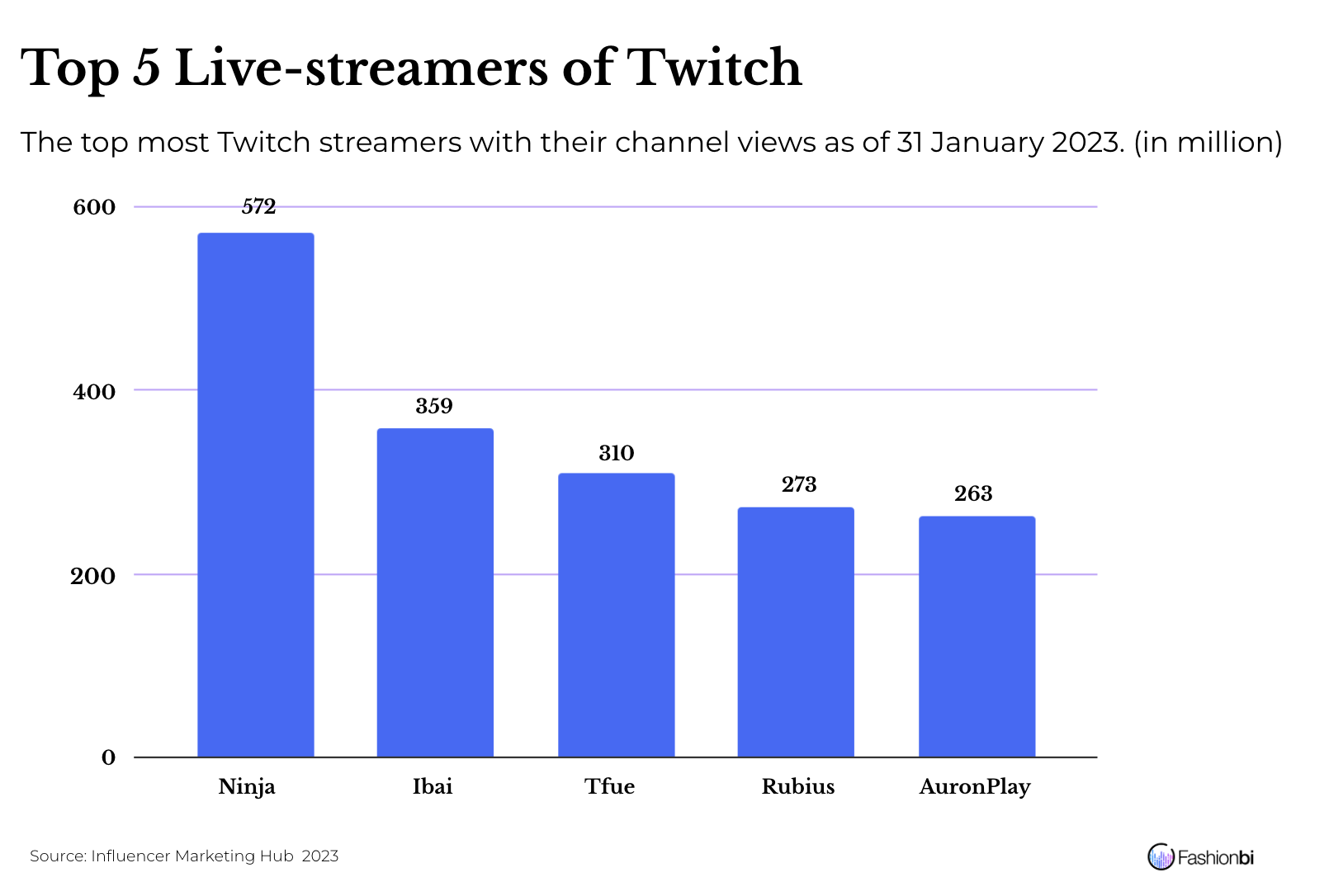Table of contents
The younger generation is spending their time mostly in the gaming world. Over 3 billion people are active gamers worldwide. With that, the brands have an opportunity to access those users through in-game advertising. As gaming is becoming a mainstream leisure, the gaming ad market is set to touch $20,7 billion by 2032. The total number of video gamers is estimated to reach 3,3 billion by 2024, with 1,5 billion from Asia alone. It is also found that around 20% of gamers are under 18 in the US. This gives a narrowed window for the brands to target Gen Z consumers.
According to The Media Leader, gamers are spending on average twice the time they see on other channels, watching the in-game ads. The Drum estimated that over 93% of the US and UK marketers are in plans to fully utilise in-game ads by 2025. Some brands such as Gucci and Nike have already stepped into the gaming world. Let us have a look at the strategies they opted for with the gaming industry.

Virtual Avatars
Gartner predicted that 25% of the people will be in the metaverse for at least an hour a day by 2026, to view themselves in new expressions. Gen Z is seen in focusing on inclusivity and personalisation in the digital realm. Seven out of ten insist that inclusivity is important in digital fashion. This gives a unique way to target customers by opting for direct-to-avatar commerce which is projected to get $283,47 billion by 2032.
The brands have to take expected diverse representations, and inclusivity into consideration while unveiling the new avatar tools. The offerings have to reflect the wide range of society and identities.
L'Oréal Paris launched five diverse hairstyles in avatar form to enhance self-expression. It can be viewed on many gaming channels. Charlotte Tilbury collaborated with an e-commerce platform Obsess to release personalised shopping avatars, whose body size, skin tone, and facial designs can be customised by users.
Valentino released six versatile avatars on the Meta Avatars Store that houses brands like Balenciaga, Prada, and Thom Browne. The Snapchat Avatars have been embellished further by giving the users access to dress them with the products of Ralph Lauren, Levi's, Adidas, Off-White, Carhartt, The North Face, Calvin Klein, Nike, and Vans.
Adidas created customised AI-generated avatars during the promotion of its Ozworld collection with 10 million different combinations. Around 428K avatars were created in the first ten days. More than 18K avatars were redeemed on Ready Player Me.
Phygital World
Zalphas, the generation in the median of Gen Z and Alphas aged between 9-14, are the main drivers in enhancing interest in phygital experience. The market of VR, AR and mixed reality is forecasted to touch $266,2 billion by 2024. Statista estimates that around 40% of Gen Zers will use AR technology to purchase online. The user base of the AR and VR software market is led by video gamers with 70 million and expected to go up to 215 million by 2025.

The Zalphas are becoming the potential targets for the brands. Therefore, to attract them, the brands have to launch phygital experiences with AR and VR and expand the in-real product availability in the digital world.
Amazon introduced Amazon Anywhere to allow its consumers to find and purchase physical products through gaming channels. It used the AR game named Peridot which the consumers can access with their Amazon accounts and buy the products.
Claire's unveiled Shimmerville on Roblox for the audience to receive rewards, join the phygital loyalty program and buy digital items in-store.
The Sanlitun flagship of Adidas in Beijing showcases some multi-sensory phygital installations such as a giant cube with a lottery and sound garden to entertain the consumers. It nourishes the idea of inclusivity along with the brand’s core values.
In-game Events
56% of Gen Z agree that they would attend musical events live in the digital world. Due to the pandemic, the idea of in-person virtual entertainment became a real topic. Even now, the in-game events are getting more popular with an expectation of reaching $617,33 billion by 2030. Moreover, virtual events are estimated to cost only 15% of the investment done in physical events. Creating a virtual event will not only garner more attendees but also supports gathering audience details to analyse and drive sales.
Gucci hosted the Cruise 2024 show on the South Korean gaming channel Zepeto where the users can live stream the show and purchase the collection’s digital products. It earned 235K views.
Branded Digital Universe
30% of millennials and more than 50% of Gen Zers make purchases in the game, while Gen Zers buy every month. Newzoo found that over 50% of gamers worldwide discovered new brand labels while playing video games. Video gaming companies such as Roblox and The Sandbox are providing the brands to access and create their own digital worlds that boost their commerce.
With Gen Z spending 17% and Alpha with 21% of their free time playing video games, the labels have to focus on building an engageable, fun, safe, and harassment-free virtual world with a major focus on the brand’s history, sales hiking, and educating the users.
Gucci Vault Land is the perfect example for educating its audience. This Sandbox world drives on playing to know more about the brand. It supports the gamers to accomplish each task with educational aspects of the brand's history and heritage to get rewards.
Clinique launched The Clinique Lab, created to be a virtual experience that invites users to delve into the brand’s history and the current products available. The space can be accessed through the website.
Bulgari launched a digital world in Zepeto filled with online and offline activities. There was a pop-up store and a café in it which was inspired by the brand’s real retail outlet located in Jeju Island, South Korea. Nike launched a footballverse on the same platform and invited the audience to come play football on it.
Collaborating with Streamers
The game's live streaming platform is projected to touch $17,39 billion and showcase over 1,6 billion by 2027. Twitch, which generated 5,71 billion viewing hours, has 7,8 million active users in it. Currently, it is offering the brands to get in touch with creators and their communities. To be more relatable and reliable, the brands have to partner with streamers who the users can relate to.
Burberry debuted in Twitch with the SS 2021 show live-stream that garnered 40.000 views. In December 2019, Adidas joined forces with Tyler ‘Ninja’ Blevins to create a sneakers collection that was completely sold 40 minutes after the launch.
Here are the top 5 Twitch streamers.
Ninja
With over 18,6 million followers on Twitch and 24 million on YT, Ninja is one of the most popular live Twitch streamers. His channel has a viewership of over 572 million (as of 31 January 2023). He has a YouTube channel with 23,7 million subscribers and posted a total of 1,8K videos. On Instagram, his total followers are 12,2 million. He has played Fortnite with a number of celebrities such as Travis Scott, Drake, and JuJu Smith-Schuster.
AuronPlay
AuronPlay holds around 15,7 million followers on Twitch with 263 million channel views (as of 31 January 2023). He has a total followers of 18,6 million on Instagram and 29,1 million subscribers with 404 videos on YouTube. He has been featured in the Spain Issue of GQ and Forbes. The president of El Salvador mentioned him as the “minister of YouTube” in the country.
Rubius
Rubén Gunderson, known as Rubius, has 14,5 million followers and 273 million views (as of 31 January 2023) on Twitch. Rubius’s Instagram account houses 18 million followers. On YouTube, there are 12,1 million subscribers. With an educational background in animation and 3D modelling, his content featured gaming, sketch comedies, vlogs, and fan FAQs.
Ibai
Ibai has 15,1 million followers with 359 million channel views (as of 31 January 2023) on Twitch. His YouTube channel showcases 11,2K videos with 11,2 million subscribers. Over 9,9 million users follow him on Instagram. He currently owns a streaming brand and has collaborated with several charities. In addition to that, he has hosted interviews with various personalities from different fields.
Tfue
Tfue’s Twitch account displayed over 11,4 million followers and 310 million channel views (as of 31 January 2023). Till now, he has posted 951 videos on YouTube where he owns 11,7 million followers. On Instagram, around 4,3 million users follow him. His channel’s engagement rate reached sky-high when he began to play Fortnite. After starting an independent venture, he hosts over 25.000 users per live stream on average.

Cover Image: Gucci Town on Roblox, courtesy WWD.